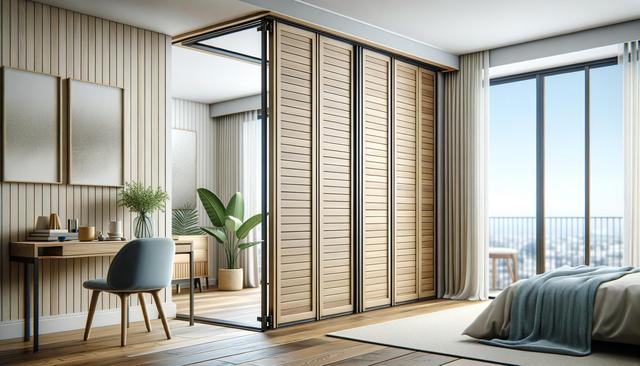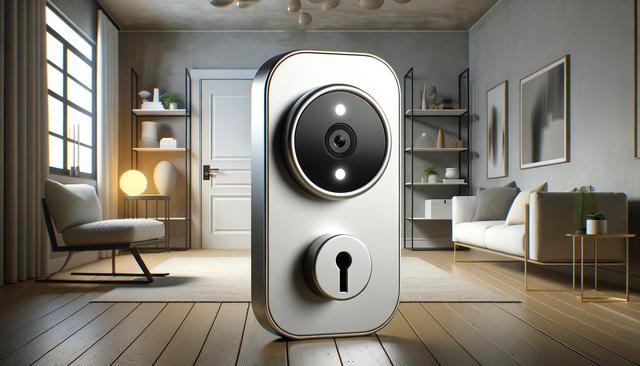Understanding the Appeal of Custom Folding Doors
Folding doors, also known as bi-fold doors, have become a popular architectural feature in both residential and commercial settings. Their ability to open up spaces and create seamless transitions between indoor and outdoor areas makes them particularly attractive. Custom folding doors take this concept a step further by allowing homeowners and designers to tailor the system to specific needs regarding size, material, finish, and functionality.
One of the major appeals of custom folding doors is their adaptability. Whether you’re working with limited wall space or aiming for a dramatic floor-to-ceiling installation, custom options ensure your doors are designed to match your vision. They are often used in areas such as:
- Living rooms opening to patios or decks
- Office spaces that require flexible partitioning
- Retail storefronts that benefit from open, inviting entrances
- Sunrooms or enclosed porches
The customization possibilities also mean you can select frame materials like aluminum, wood, or composite to suit your aesthetic and structural needs. Glass options—ranging from clear to tinted or frosted—further enhance the design flexibility of folding doors.
Materials and Design Choices
When choosing custom folding doors, the choice of materials plays a crucial role in determining both appearance and performance. Each material offers a unique set of advantages and considerations, allowing you to align your selection with your priorities, whether they be durability, style, or ease of maintenance.
Here are common materials used in folding door systems:
- Aluminum: Lightweight, durable, and resistant to corrosion. Frequently used for modern aesthetics.
- Wood: Offers a classic, warm appearance. Requires more maintenance but is often favored for its natural elegance.
- Vinyl or Composite: Affordable and easy to maintain. Suitable for those looking for a budget-friendly yet functional solution.
Design details also matter. From the color of the frames to the type of glazing used, every element can be customized. Choices like low-E glass can improve energy efficiency, while integrated blinds offer privacy without compromising sunlight. Many custom designs also incorporate multi-point locking systems for added security.
Space Planning and Installation Considerations
Proper planning is essential when incorporating custom folding doors into a space. These doors require precise measurements and an understanding of how they will operate within your layout. Taking into account the swing space, track placement, and structural support ensures smooth functionality and long-term durability.
Before installation, consider these key factors:
- Wall Opening: Ensure the opening is wide enough for folding panels and confirm the height is consistent across the span.
- Threshold Options: Choose between flush, recessed, or raised thresholds depending on your need for aesthetics, accessibility, and weatherproofing.
- Track System: Decide on top-hung or bottom-rolling systems based on structural support availability and desired smoothness of operation.
Professional installation is highly recommended for custom folding doors. Specialists will ensure the frame is properly aligned, glass panels are securely fitted, and functionality is optimized for daily use.
Energy Efficiency and Climate Control
Custom folding doors can significantly impact a building’s energy performance. When designed thoughtfully, they help regulate temperature by maximizing natural light and minimizing heat loss or gain. Many systems today are built with thermal breaks, insulated frames, and double or triple-glazed glass to enhance energy efficiency.
Important energy-saving features include:
- Low-emissivity (Low-E) glass that reflects heat while allowing visible light
- Weatherstripping to seal gaps and reduce air leaks
- Thermally broken frames to minimize heat transfer
In warmer climates, folding doors can be used to promote cross-ventilation when open, reducing the need for mechanical cooling. In colder regions, well-insulated doors contribute to maintaining a comfortable interior without excessive heating. These factors not only contribute to a more pleasant living or working environment but also help reduce energy bills over time.
Maintenance and Long-Term Care
Maintaining custom folding doors is relatively straightforward but essential to preserving their appearance and performance. The specific maintenance requirements depend on the materials used, but general upkeep ensures longevity and smooth operation for years to come.
Basic maintenance tips include:
- Regular cleaning: Use a mild detergent and soft cloth to clean glass and frame surfaces.
- Track care: Keep tracks free of debris and lubricate them occasionally to prevent sticking.
- Inspection: Periodically check for loose hardware or misalignment and tighten components as needed.
For wooden frames, it’s advisable to reseal or repaint them periodically to protect against moisture and UV damage. Aluminum and composite frames typically require less intensive care, making them a practical option for busier households or commercial environments.
By staying proactive with maintenance, you can ensure your folding doors continue to function safely and look appealing, protecting your investment in the long run.
Conclusion: Making the Right Choice for Your Space
Custom folding doors offer a powerful combination of style, flexibility, and functionality. Whether you’re aiming to create a dramatic transition between indoor and outdoor areas or simply want to partition a space creatively, these doors provide versatile solutions. With the right material, thoughtful design choices, and professional installation, custom folding doors can enhance both the form and function of a space. Evaluating your specific needs and preferences will help guide you toward a setup that matches your lifestyle or business environment, delivering both visual appeal and practical benefits over time.


